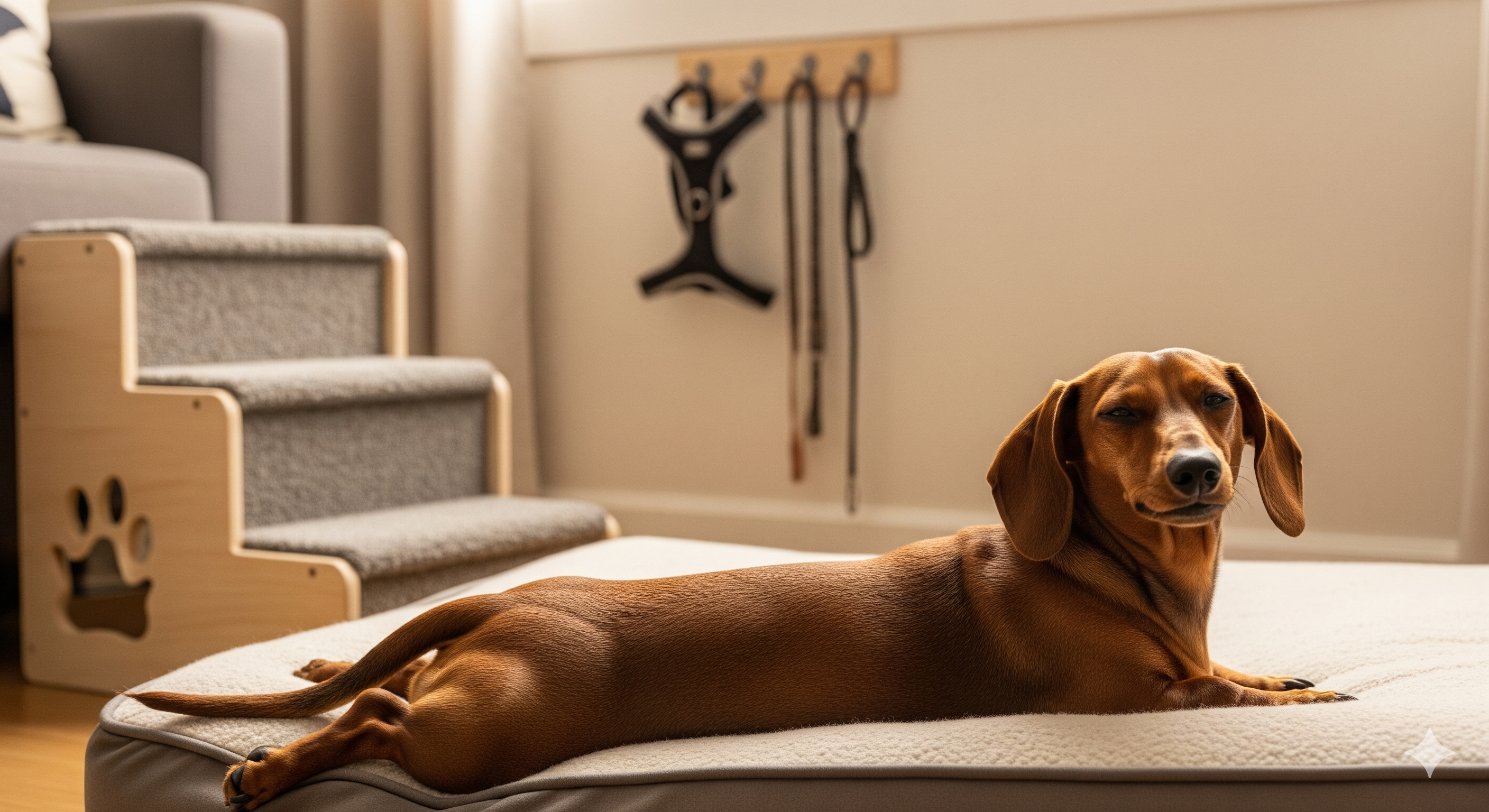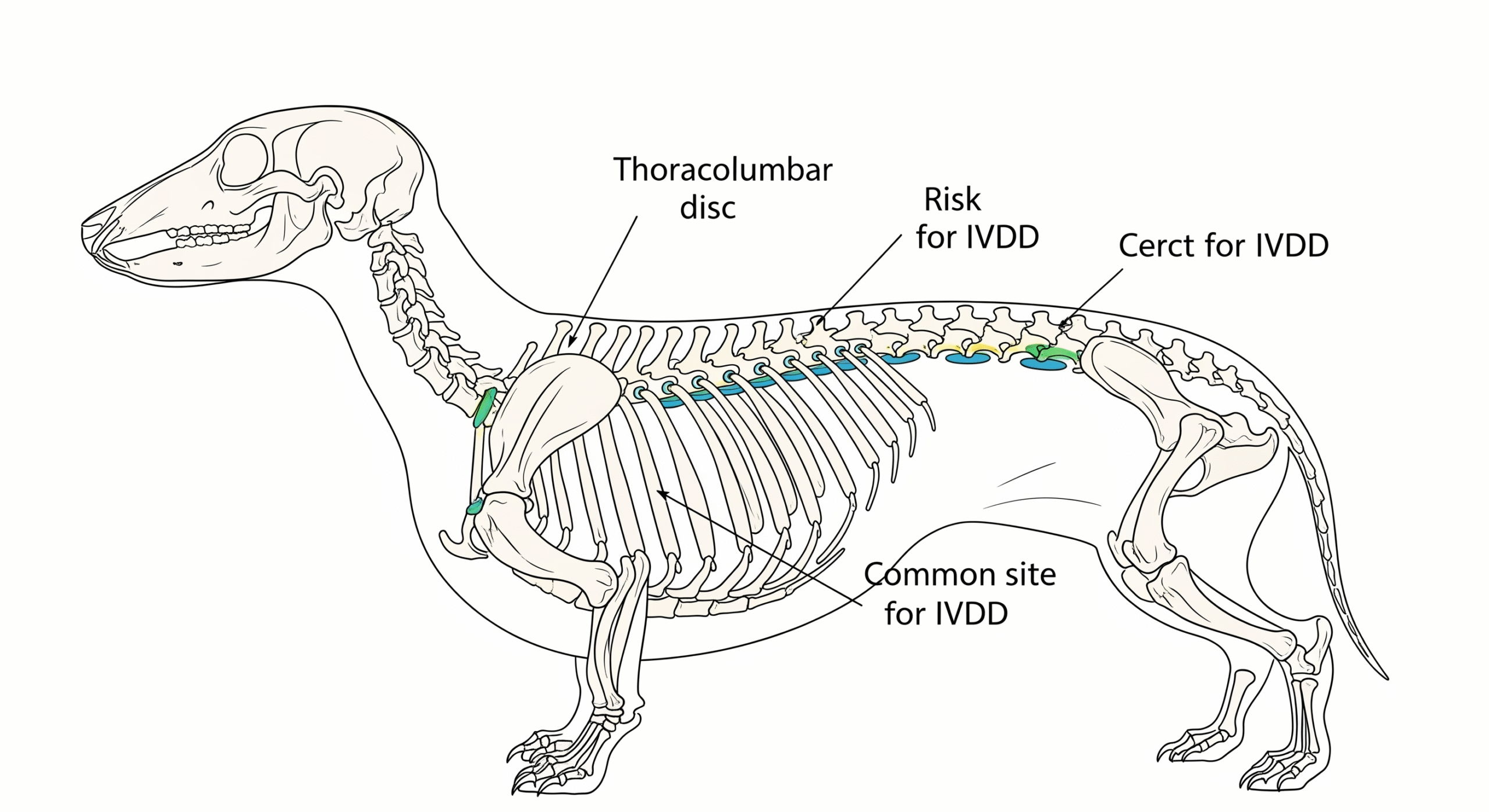Welcome to the wonderful, wiggly world of dachshund ownership! These long-bodied, short-legged charmers are packed with personality, bravery, and affection. But their unique build, which makes them so endearing, also requires specialized care from the very first day you bring your puppy home. A proactive dachshund puppy guide focused on spinal health isn’t just a recommendation—it’s an absolute necessity for any responsible doxie parent.
This comprehensive guide will walk you through everything you need to know about safeguarding your dachshund puppy’s most vulnerable asset: their back. We’ll dive into the science behind the risks, provide actionable tips for prevention, and outline the best practices to ensure your puppy grows into a strong, healthy, and happy adult. Think of this as your essential manual for a lifetime of wags and adventures, free from preventable pain.
Why Dachshunds Are Unique: Understanding the Anatomy of Risk 🔬
To properly care for your dachshund puppy, you must first understand why they are predisposed to back issues. The condition to be aware of is Intervertebral Disc Disease (IVDD).
- The Science: Dachshunds are a chondrodystrophic breed. This means they have a genetic predisposition for abnormal cartilage development, which leads to their characteristic short legs. This same genetics affects the discs between their vertebrae.
- The Discs: These discs act as cushions between the spinal bones. In dachshunds, the discs can prematurely harden (calcify) and become brittle.
- The Risk: A simple jump, slip, or awkward movement can cause this weakened disc to rupture or herniate, pressing on the spinal cord. This pressure causes pain, nerve damage, and in severe cases, paralysis.
This dachshund puppy guide emphasizes that prevention starts in puppyhood because the cumulative stress on the spine over time is a major factor. Building good habits early is the key to a healthy life.
The Four Pillars of Dachshund Back Care 🛡️
Protecting your puppy’s spine is built on a foundation of four critical principles: weight management, controlled exercise, proper handling, and environmental management.
1. Weight Management: The #1 Preventative Measure ⚖️
This is the most important factor you can control. Excess weight puts immense and constant strain on the spinal column.
- The Goal: Your puppy should have a visible waist when viewed from above, and you should be able to easily feel (but not see) their ribs.
- Actionable Tips:
- Measure Food: Use a measuring cup for kibble, not a scoop. Follow the guidelines on the puppy food bag as a starting point, but adjust based on your individual pup’s metabolism and body condition.
- Healthy Treats: Use small, low-calorie treats for training (e.g., bits of carrot, green bean, or their regular kibble).
- Regular Weigh-Ins: Track your puppy’s weight weekly to ensure they are growing at a steady, healthy rate. Consult your vet for the ideal target weight.
2. Exercise: Building Muscle is Building Armor 💪
Strong core, back, and leg muscles act as a natural “corset” that supports and stabilizes the spine.
- Good Exercises:
- Controlled Walking: Walking on a harness (never a collar!) is excellent low-impact exercise.
- Swimming: This is the ultimate exercise for dachshunds. It builds muscle without any impact on the joints or spine.
- Cavaletti Poles: Walking over low, spaced-out poles encourages careful lifting of the legs and strengthens the core.
- Exercises to Avoid:
- High-Impact Play: Avoid activities that involve a lot of jarring, jumping, and sharp turns (e.g., intense fetch on hard surfaces, frisbee).
- Long Stair Cases: Puppies should be carried up and down long flights of stairs. For a few steps, teach them to go slowly and carefully.
3. Proper Handling: Support the Back and Neck 👐
Never pick up a dachshund puppy by scooping them up under their armpits. This puts all the weight and pressure on their spine.
- The Two-Hand Method: Always use two hands. One hand should support their chest and front legs, while the other hand supports their hindquarters and back, keeping their spine in a neutral, horizontal position.
- The “Football Hold”: Cradle them against your body, with one hand supporting their chest and the other supporting their bottom, much like a football.
4. Environmental Management: Puppy-Proofing for Their Back 🏠
Your home is an obstacle course of potential spinal hazards. Manage their environment to minimize risk.
- Provide Ramps & Steps: This is non-negotiable. Invest in sturdy, non-slip ramps or stairs for your puppy to access the sofa, your bed, or their favorite window seat. Never allow them to jump on or off furniture.
- Use Non-Slip Flooring: Slipping on hardwood, tile, or laminate floors can cause a serious injury. Use area rugs, runners, and yoga mats to create secure pathways through your home.
- Crate Training: A properly sized crate is a safe den for your puppy to rest and prevents them from engaging in risky behavior when unsupervised.
Essential Supplies for a Dachshund Puppy 🛒
Your shopping list for a dachshund is unique. Here’s what you need:
- Harness: A well-fitting harness that distributes pressure across the chest is mandatory. Never attach a leash to a collar, as it strains the neck and spine.
- Ramps/Stairs: As mentioned, these are critical for furniture access.
- Orthopedic Bed: A high-quality, supportive orthopedic bed will cushion their joints and spine during sleep.
- Food Puzzle Toys: These provide mental stimulation without physical risk, helping to keep a growing puppy occupied.
Recognizing the Signs of a Back Problem 🚨
Even with perfect care, problems can occur. Knowing the early warning signs can save your dog from further injury. Contact your vet immediately if you notice:
- Reluctance to move or jump (more than usual)
- Crying out or yelping in pain when picked up or touched
- A hunched back with a tense, stiff abdomen
- Shaking or trembling
- Wobbliness in the back legs or dragging of knuckles
- Loss of bladder or bowel control
Beyond the Back: Other Dachshund Health Considerations 👁️
While back health is paramount, this dachshund puppy guide would be remiss not to mention other common breed concerns:
- Dental Disease: Their small mouths are prone to overcrowding and tartar buildup. Start a daily teeth-brushing routine early.
- Obesity: We’ve covered this, but it bears repeating—it’s a huge problem for the breed.
- Ear Infections: Their floppy ears trap moisture and debris. Check and clean their ears weekly.
Conclusion: A Lifetime of Love and Support
Caring for a dachshund puppy is a rewarding commitment that comes with specific responsibilities. By embracing the strategies in this dachshund puppy guide—managing their weight, providing safe exercise, using proper equipment, and creating a spine-friendly home—you are not limiting their fun. You are proactively building the foundation for a long, vibrant, and pain-free life filled with all the adventures your brave little “wiener dog” can handle.
Your diligence today is the key to a lifetime of happy, healthy wags tomorrow.

🐾 Call to Action (CTA): Are you a proud dachshund parent? Share your own best back-care tip in the comments below! For more breed-specific advice and a community of fellow dachshund lovers, subscribe to our newsletter for regular updates and expert insights.
Ready to Choose Your Gear? Now that you understand the principles of loose-leash walking, make sure you have the right equipment to set you both up for success. The best harness can prevent pulling before it even starts. For detailed reviews on safety, adjustability, and training features, read our buyer’s guide: Best Puppy Harnesses for Training & Walks.






